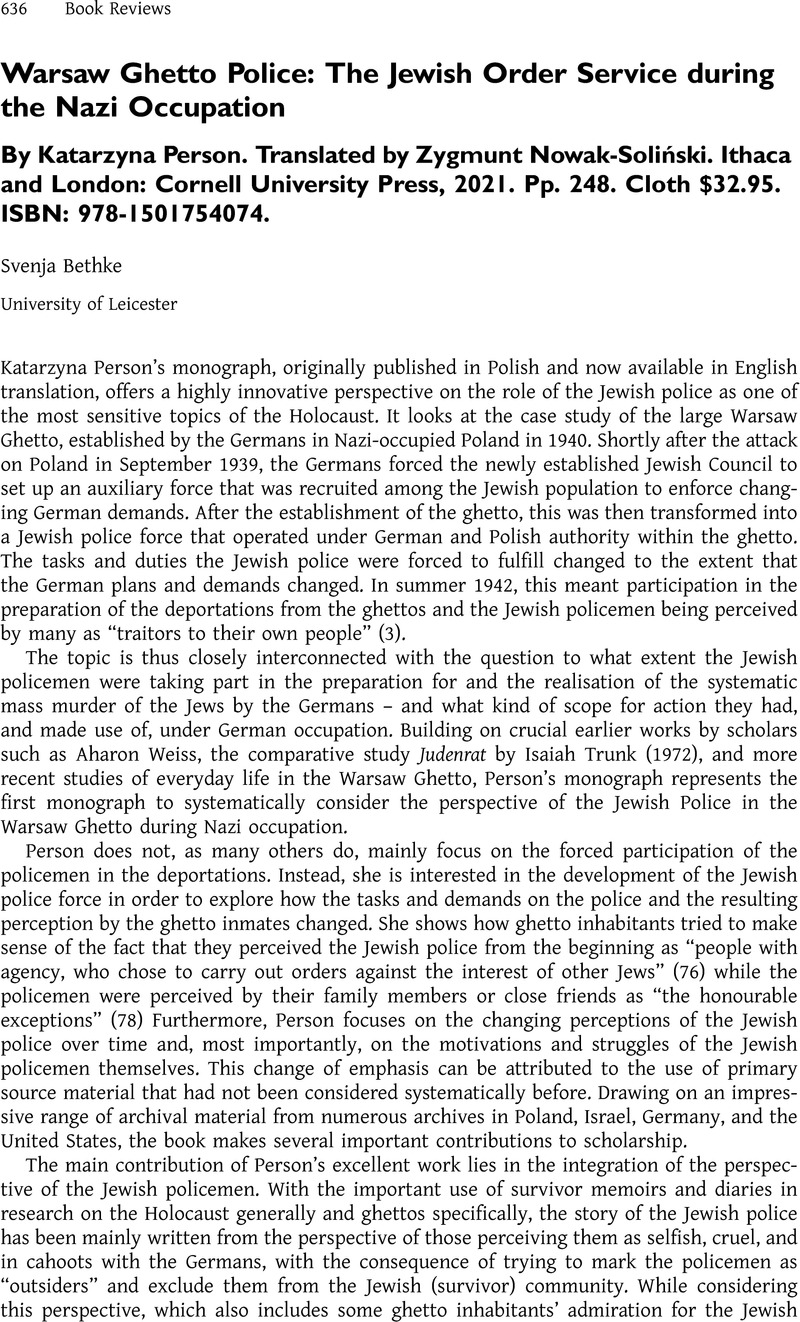No CrossRef data available.
Article contents
Warsaw Ghetto Police: The Jewish Order Service during the Nazi Occupation By Katarzyna Person. Translated by Zygmunt Nowak-Soliński. Ithaca and London: Cornell University Press, 2021. Pp. 248. Cloth $32.95. ISBN: 978-1501754074.
Review products
Warsaw Ghetto Police: The Jewish Order Service during the Nazi Occupation By Katarzyna Person. Translated by Zygmunt Nowak-Soliński. Ithaca and London: Cornell University Press, 2021. Pp. 248. Cloth $32.95. ISBN: 978-1501754074.
Published online by Cambridge University Press: 05 January 2023
Abstract
An abstract is not available for this content so a preview has been provided. Please use the Get access link above for information on how to access this content.

- Type
- Book Review
- Information
- Copyright
- Copyright © The Author(s), 2022. Published by Cambridge University Press on behalf of Central European History Society of the American Historical Association


